Oscars 2023 stage design: ‘a love letter to cinema‘
The Oscars 2023 stage design was entrusted to Misty Buckley and Alana Billingsley, the first female team to take on the role. We speak to Buckley about this momentous commission
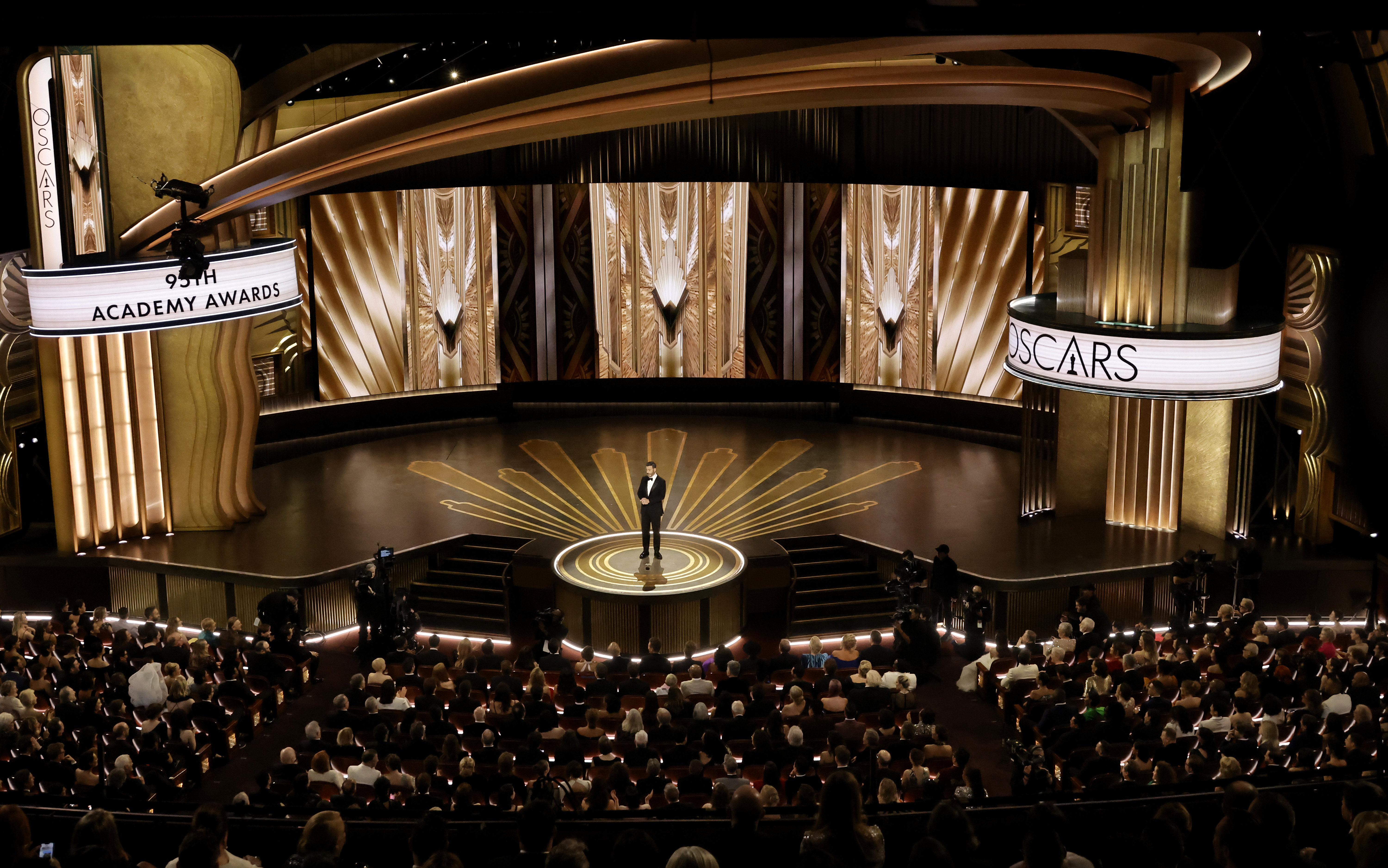
Held at Hollywood's Dolby theatre on 12 March, the Oscars 2023 featured a stage designed by industry veterans Alana Billingsley and Misty Buckley. The awards night saw sci-fi movie Everything Everywhere All at Once as the night's star winner, named as the year's Best Picture and with further wins including Michelle Yeoh as Actress in a Leading role, Ke Huy Quan and Jamie Lee Curtis as Supporting Actor and Actress respectively, and awards for Directing, Editing and Writing.
The Oscars stage design was co-conceived by British designer Misty Buckley with LA-based Alana Billingsley. It's the first time the Academy commissioned two women to create the stage design, which was inspired by the American film tradition, from the Golden Age of Hollywood to classic movie theatres across the USA.
We speak to Buckley, whose experiences in the industry include creating the stage for Coldplay’s Super Bowl 50 Halftime Show, the London 2012 Paralympics Closing Ceremony and, most recently, the set for the BRIT Awards, her fifth design for the British music awards.
Oscars 2023 stage design: an interview with stage co-designer Misty Buckley
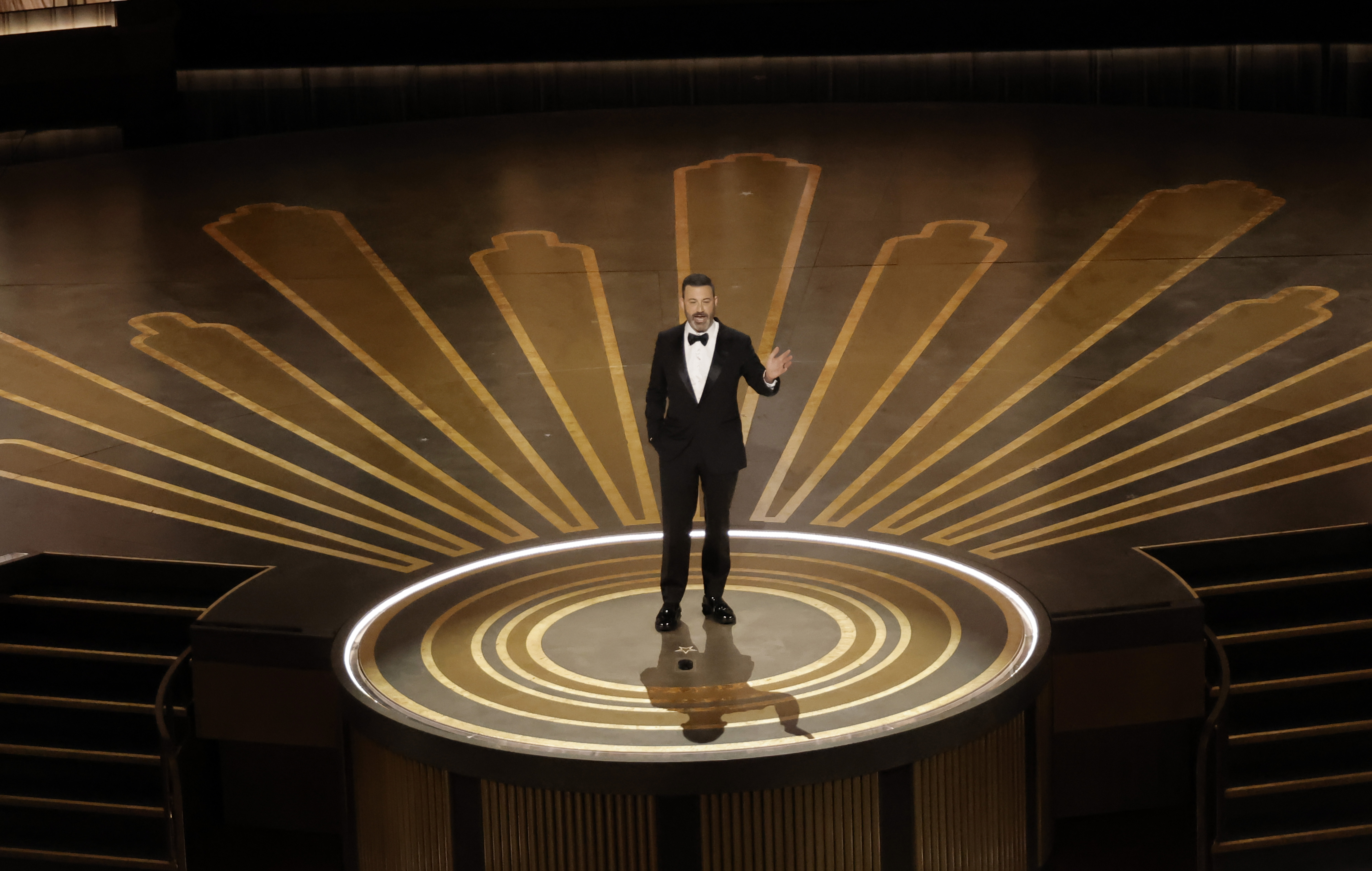
Jimmy Kimmel presenting the 95th Academy Awards
Wallpaper*: What visual themes did you draw from for your design of the Oscars stage?
Misty Buckley: We were inspired by classic movie houses, theatres and social salons around the United States. We created a vibrant gathering space where classic motifs became modern canvases on which the intention was to write a love letter to cinema. The stage is very architectural and draws on the memories of the moment we first experienced the cinema. Whether it was walking under the marquee of lights and into the foyer, the first smell of sweet popcorn, the warmth of the golden deco lighting, the texture of the elegant drapes or the fully transformative experience of that huge projection screen. We have incorporated all these design notes, whilst ensuring [the design] very much occupies a place in the modern day. The design is not pastiche but very much a fantasy movie theatre.
W*: Were you given a brief for this project?
MB: The brief we were given was to design a set that really celebrates film, both the experience of cinema and the talent that makes cinema what it is. There were several films made in the last year that celebrated cinemas and the craft of filmmaking. We felt like the attention needed to be brought back to the experience and the art of cinema, to look specifically like an award show fit for film. It was important to create a fully immersive wrap-around experience for the guests. It’s a real privilege to be able to design a show about the cinema experience for those who are the actual makers. From concept (script writing) to final delivery of the film (the actual viewing experience) and all the talent that goes into that process, we hope that the guests, award nominees and winners, feel like this is a celebration of them.
Receive our daily digest of inspiration, escapism and design stories from around the world direct to your inbox.
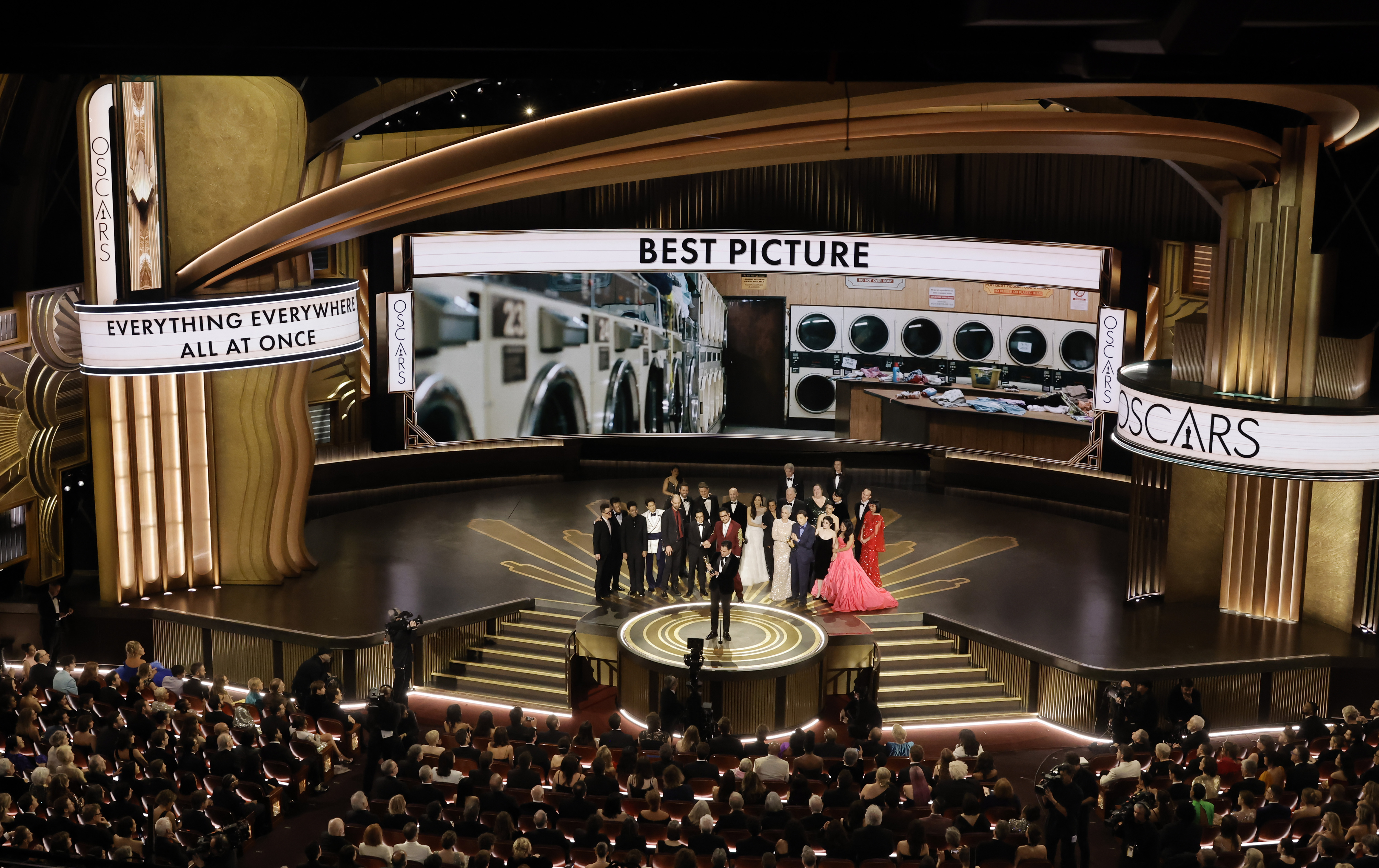
The cast from Everything Everywhere All at Once accepting the Best Picture Award at the 95th Academy Awards
W*: How did you work with the live experience as well as the broadcast effect to viewers in mind?
MB: My design experience ranges from live music touring shows to televised music shows, so it is ingrained in me to design for both experiences simultaneously. When I design, I consider the visceral experience of both the performers on stage and those in the room, but particularly how this will translate on camera, with camera shots and framing in mind. When they walk into the Dolby Theatre, the audience are taken by how immersive the set design is as it extends out in the room and over the Queen's boxes. We have also broken the line beyond the proscenium arch, blurring the divide between stage and audience. It feels like everyone is at the same party!
[For the viewers] at home, (...) the overhead spider camera amplifies the scale of the set, whilst the colour palette and close-up shots keep it warm and intimate. We have worked incredibly hard to ensure it’s a very rich and wonderful experience for audiences at home, as well as those in the theatre on the night.
W*: How does the stage serve the event throughout the night?
MB: The combination of architecture and high-resolution screen allows us to develop the narrative of the show throughout the night. The screen is so carefully built into the architecture, that at times it’s hard to tell what is digital and what is real scenic. Our screen producer/designer is Raj Kapoor, who is incredibly imaginative. Together, we have extended the immersive digital element and taken the audience on an incredibly rich and beautiful journey, delving in and out of worlds and creating huge explosive moments of colour and joy and tender, quiet moments of raw emotion.
W*: How did you collaborate with Alana for the design?
MB: I have known Alana for many years. She has art directed many of the shows I have designed in the US, so we have a great relationship and are excellent at communicating. The Academy was really excited to have a women-led design team, and to work with their first international designer for the Oscars. They felt that they needed someone LA-based as well, by way of covering the time difference. Alana’s incredible, in-depth knowledge of the show meant this collaboration was a no-brainer, and it worked to our advantage as we had a 24-hour design process, which the Oscars definitely requires. We are also the first women in 95 years to design the show.
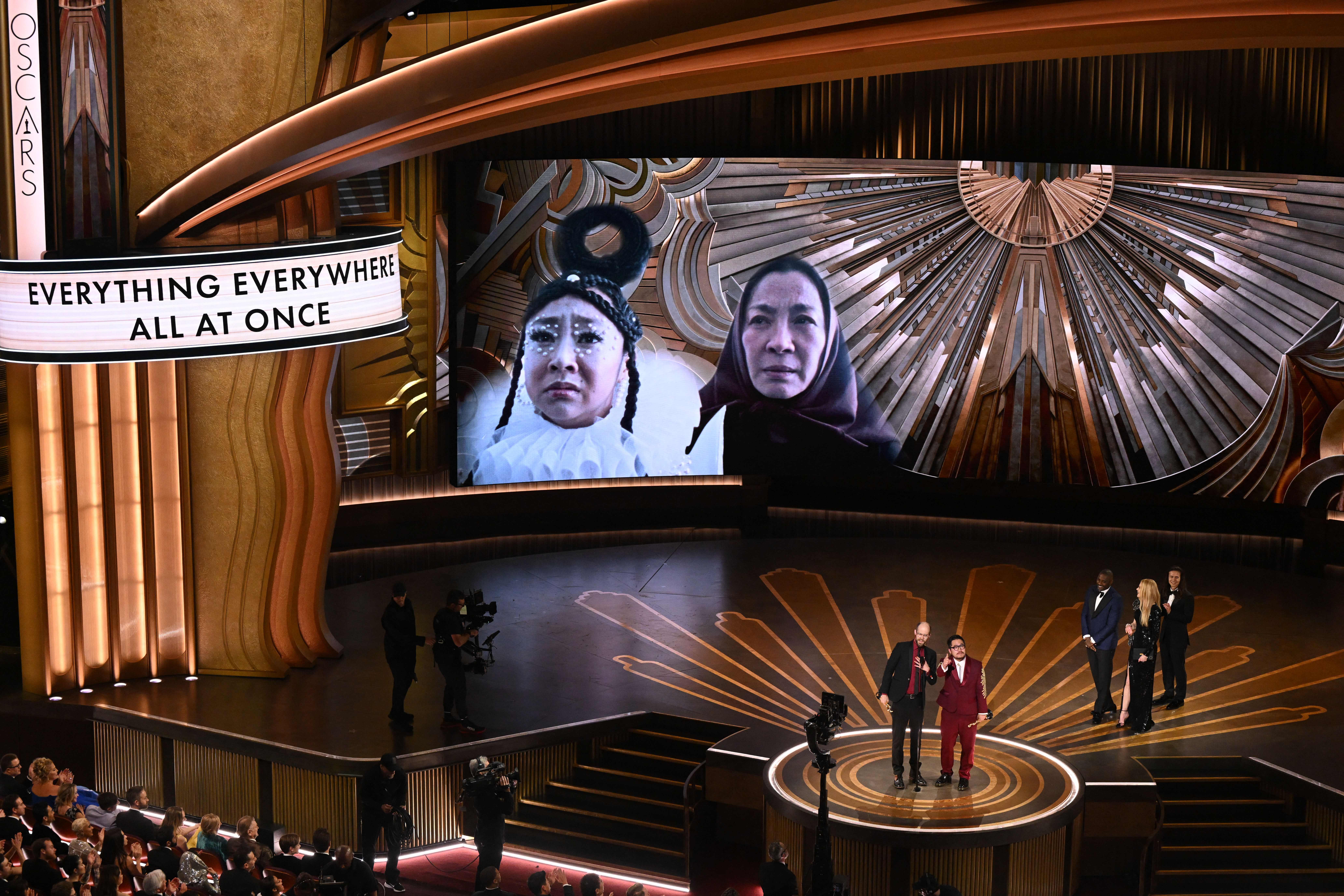
A speech by Daniel Kwan and Daniel Scheinert, directors of Everything Everywhere All at Once
W*: Did any of your past/recent projects inform the approach you took for this design?
MB: I think all my design work and experience inform the next design. You never stop learning about cameras, lenses, lighting or materials. What works, what doesn’t. As my career develops, I do get bolder with composition and taking risks but I also am very open to collaboration. I have a women-strong design studio in the UK and I actively encourage people to participate in the discussions around design. We live in such an open and creative time that I think sharing and imaginative collaboration are where the best stuff comes from. Creativity is infinite, it will not run out. I believe together as a collective, we have far more power to create change… or just make things beautiful!
W*: What has been your favourite thing about working with the Oscars?
MB: I have grown up with the Oscars as the pinnacle of glamorous television. I love the broad range of design styles that I get to explore and experiment with in my work. The Oscars design was always going to be more elegant and classic than my usual rock shows but I definitely feel that I have been able to put my stamp on it. To have the opportunity to collaborate with Alana was wonderful and we had this continuous language about form, elegance, beauty and American cinema history. Her years of experience as art director on the show made it a very warm environment to be a part of. She really was a true star.
W*: It's exciting that the stage design is created by two women for the first time. Do you personally consider this a momentous time in Hollywood history? There has been a lot of talk about how the Oscars have been changing in the past couple of years to be more inclusive. What do you think of the direction the Academy is taking and its future?
MB: As it is my first year, I can’t comment on what it was like before, but I can say it’s an incredibly diverse and inclusive environment. Hopefully, this will be the norm now and it’s no longer momentous for women to lead the design team. I hope we arrive at a time when it is not even given a second thought. Moreover, I hope more young women in the arts and design realise that there isn’t just a seat for them at the table, but that the table is theirs to take.
I am very proud to be a designer in this industry, regardless of my gender, I just love my work.
Rosa Bertoli was born in Udine, Italy, and now lives in London. Since 2014, she has been the Design Editor of Wallpaper*, where she oversees design content for the print and online editions, as well as special editorial projects. Through her role at Wallpaper*, she has written extensively about all areas of design. Rosa has been speaker and moderator for various design talks and conferences including London Craft Week, Maison & Objet, The Italian Cultural Institute (London), Clippings, Zaha Hadid Design, Kartell and Frieze Art Fair. Rosa has been on judging panels for the Chart Architecture Award, the Dutch Design Awards and the DesignGuild Marks. She has written for numerous English and Italian language publications, and worked as a content and communication consultant for fashion and design brands.
-
 Curvilinear futurism meets subtropical beaches at Not A Hotel’s ZHA-designed Okinawa retreat
Curvilinear futurism meets subtropical beaches at Not A Hotel’s ZHA-designed Okinawa retreatZaha Hadid Architects has revealed the design for the first property in Not A Hotel’s futuristic new Vertex collection, coming soon to southern Japan
-
 Gorden Wagener leaves the helm of Mercedes-Benz design after 28 years with the company
Gorden Wagener leaves the helm of Mercedes-Benz design after 28 years with the companyThe German designer is stepping down from the role of chief design officer at Mercedes-Benz. We look back at his influence and impact on the world of automotive and luxury design
-
 These Christmas cards sent by 20th-century architects tell their own stories
These Christmas cards sent by 20th-century architects tell their own storiesHandcrafted holiday greetings reveal the personal side of architecture and design legends such as Charles and Ray Eames, Frank Lloyd Wright and Ludwig Mies van der Rohe
-
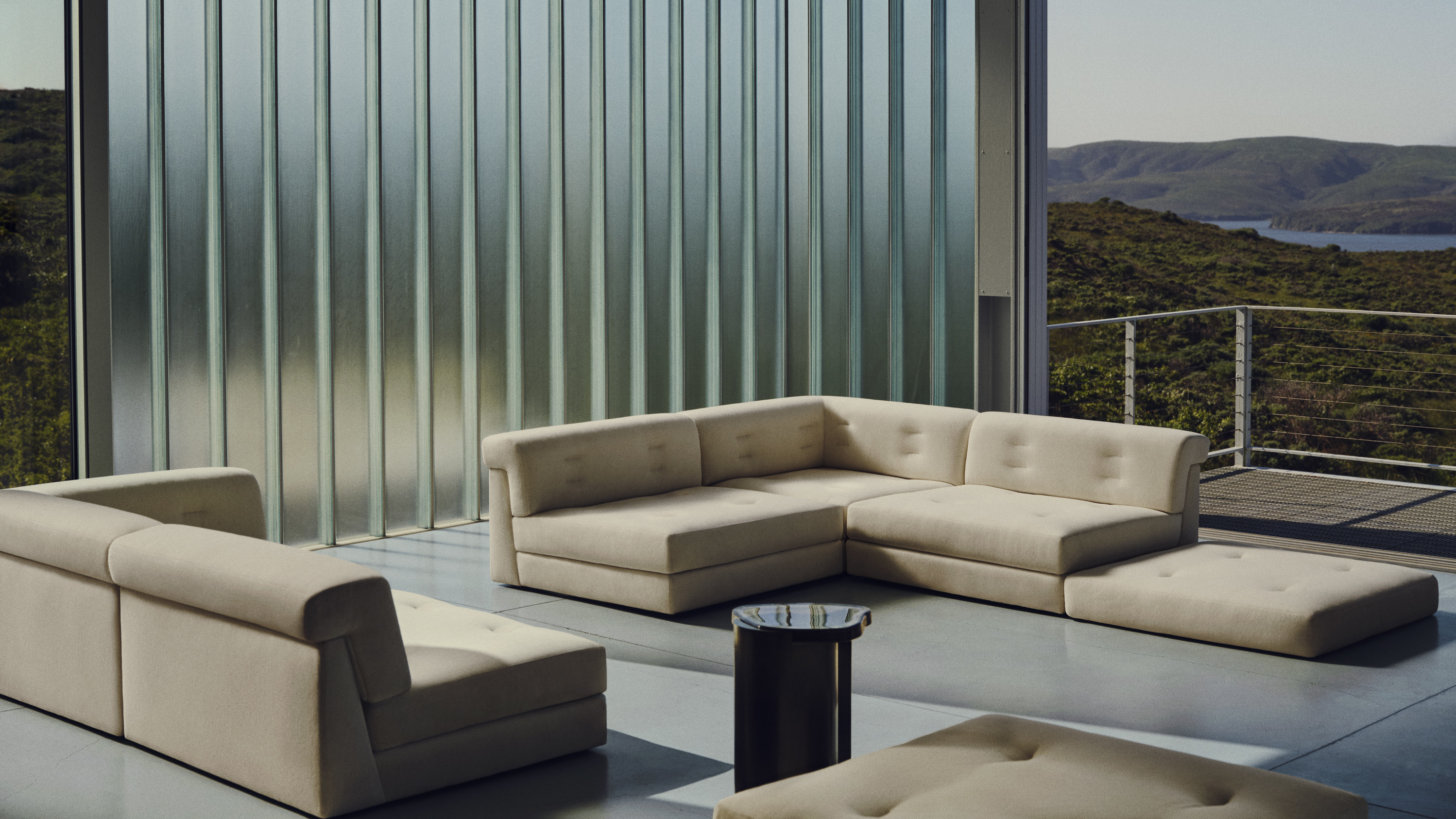 New furniture from Maiden Home elevates elemental materials through unique design
New furniture from Maiden Home elevates elemental materials through unique designFinely crafted and exquisitely formed, the New York furniture brand’s latest designs find their perfect showcase at a modernist Californian home
-
 Wallpaper* USA 400: The people shaping Creative America in 2025
Wallpaper* USA 400: The people shaping Creative America in 2025Our annual look at the talents defining the country’s creative landscape right now
-
 Workstead's lanterns combine the richness of silk with a warm glow
Workstead's lanterns combine the richness of silk with a warm glowAn otherworldly lamp collection, the Lantern series by Workstead features raw silk shades and nostalgic silhouettes in three designs
-
 Can creativity survive in the United States?
Can creativity survive in the United States?We asked three design powerhouses to weigh in on this political moment
-
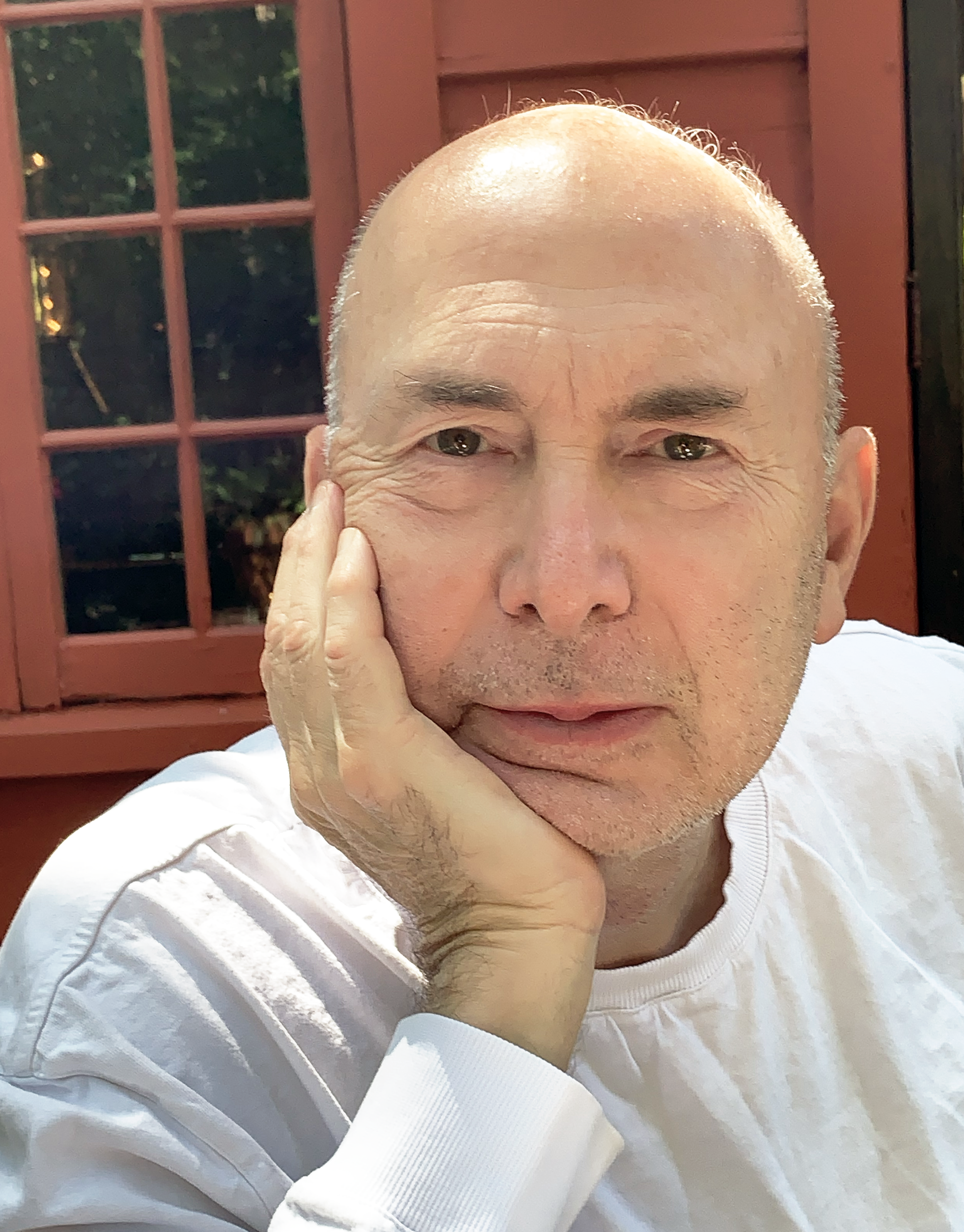 Murray Moss: 'We must stop the erosion of our 250-year-old American culture'
Murray Moss: 'We must stop the erosion of our 250-year-old American culture'Murray Moss, the founder of design gallery Moss and consultancy Moss Bureau, warns of cultural trauma in an authoritarian state
-
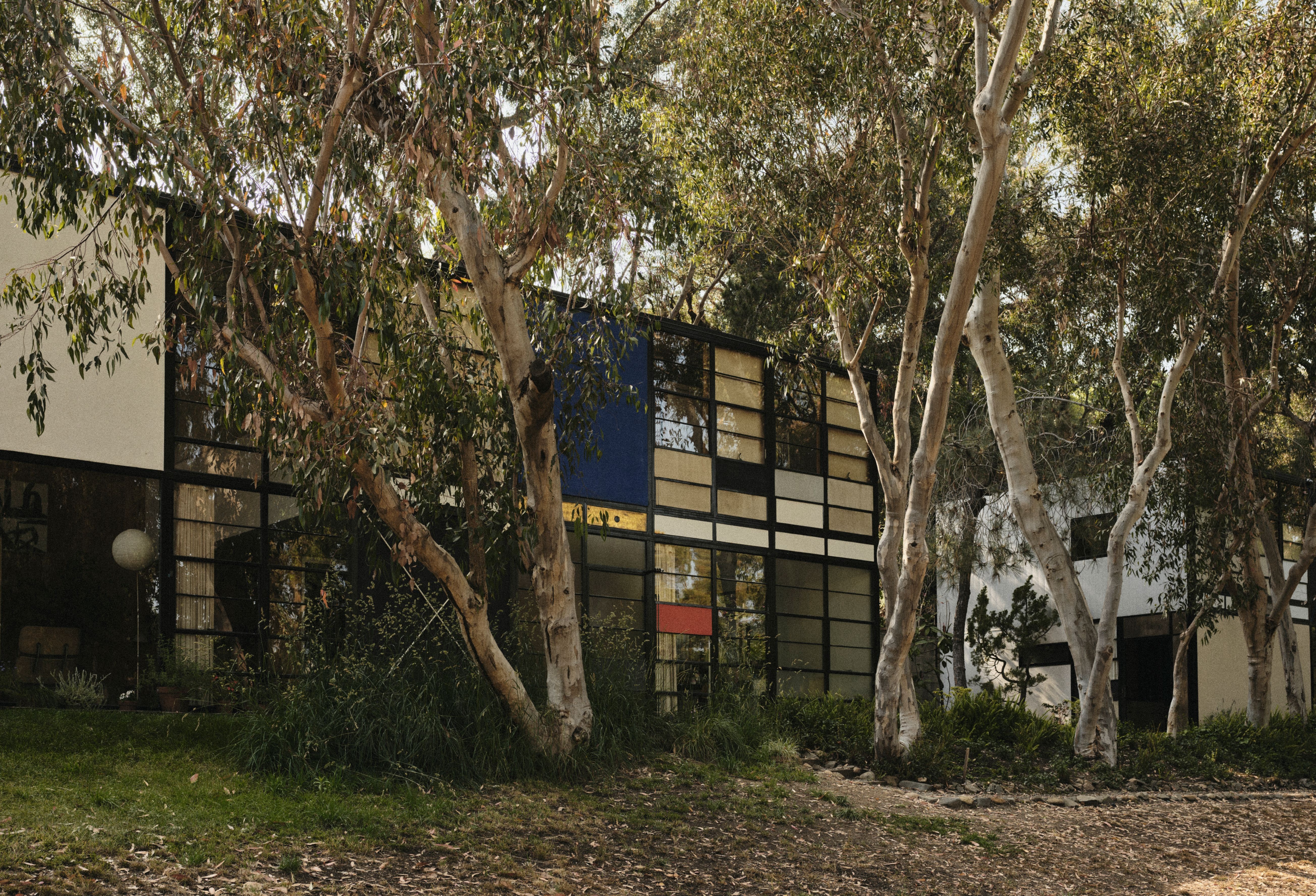 ‘You can feel their presence’: step inside the Eameses’ Pacific Palisades residence
‘You can feel their presence’: step inside the Eameses’ Pacific Palisades residenceCharles and Ray Eames’ descendants are exploring new ways to preserve the designers’ legacy, as the couple’s masterpiece Pacific Palisades residence reopens following the recent LA fires
-
 2025’s Wallpaper* US issue is on sale now, celebrating creative spirit in turbulent times
2025’s Wallpaper* US issue is on sale now, celebrating creative spirit in turbulent timesFrom a glitterball stilt suit to the Eames House, contemporary design to a century-old cocktail glass – the August 2025 US issue of Wallpaper* honours creativity that shines and endures. On newsstands now
-
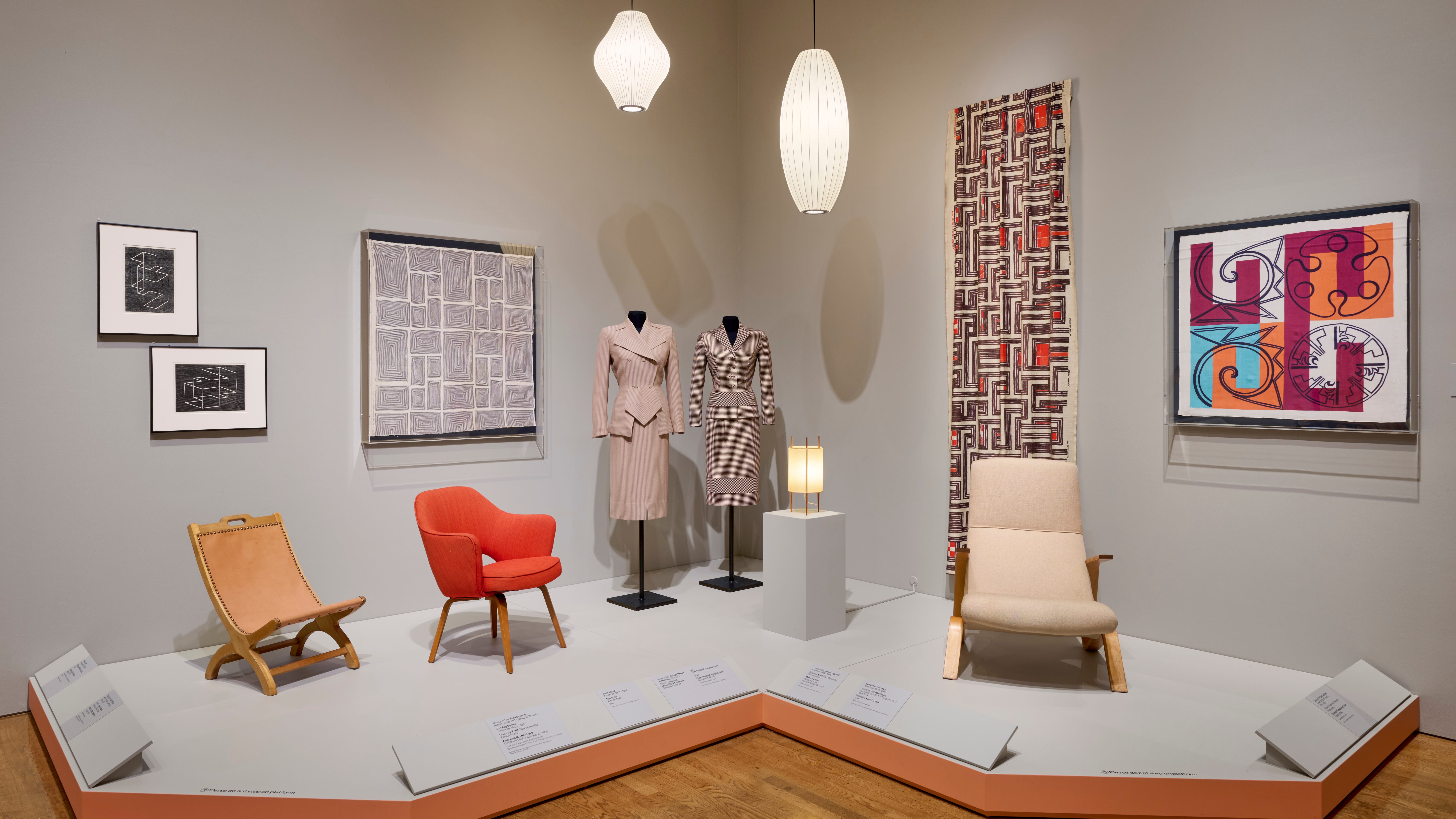 ‘Boom: Art and Design in the 1940s’ explores the creative resilience of the decade
‘Boom: Art and Design in the 1940s’ explores the creative resilience of the decadeNoguchi and Nakashima are among those who found expression and innovation in the adversity of the 1940s; take a walk through the Philadelphia Museum of Art exhibition